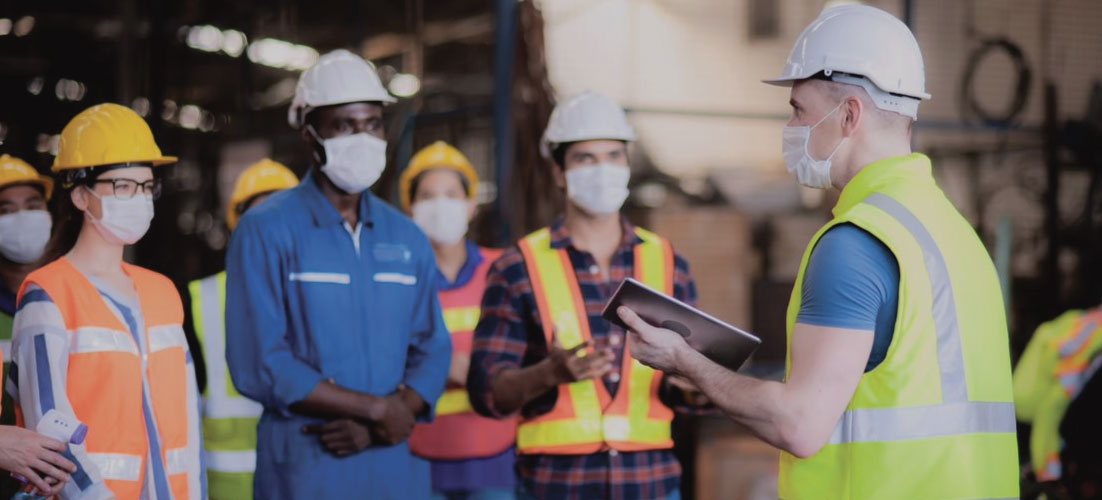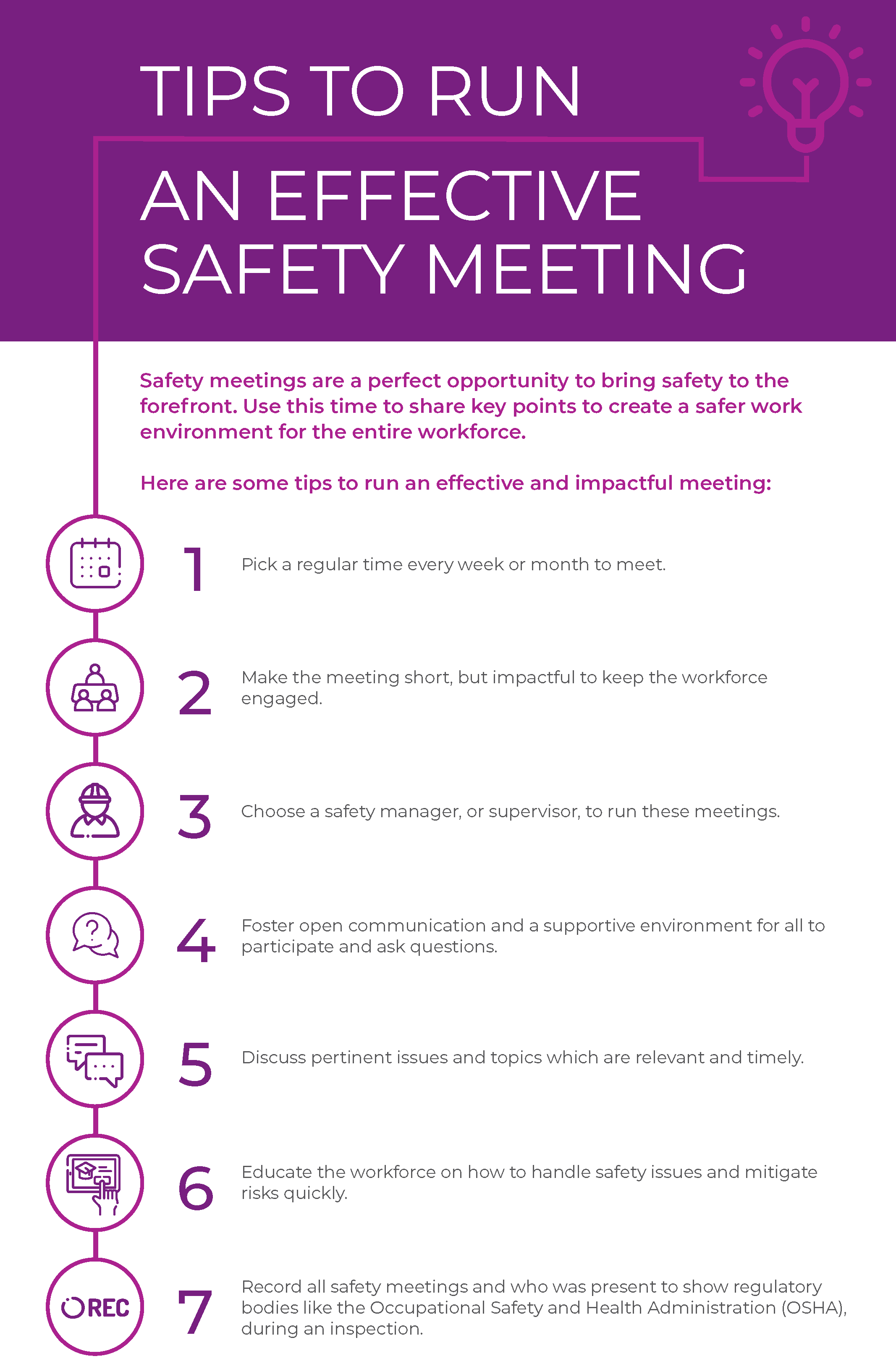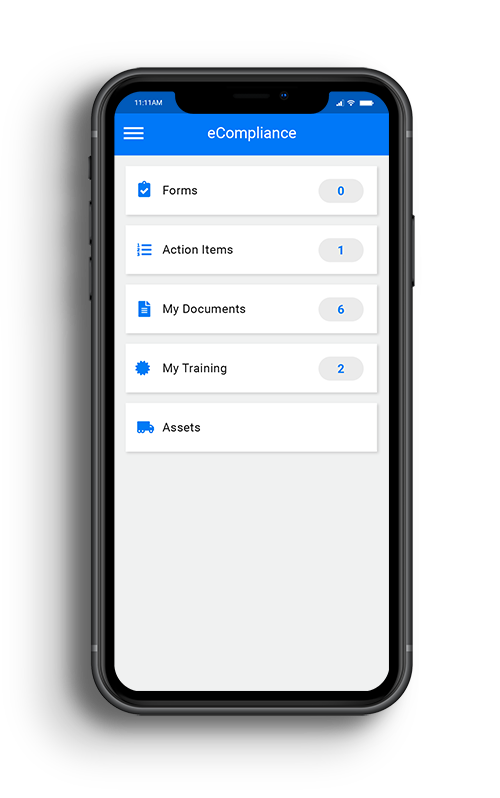
Share this Post
PUBLISHED
July 12, 2021
READ TIME
4 Minutes
WRITTEN BY
![]() Dina Adlouni
Dina Adlouni
Dina is the resident Content Writer at EcoOnline North America . When she’s not writing about health and safety, you’ll find her enjoying a cup of tea while watching her favorite sitcom.
What is Construction Safety?
Construction safety encompasses rules, protocols, and procedures put in place to help mitigate risks and create a safe working environment for the workforce. These guidelines must be reinforced with workers during safety meetings to ensure the proper measures are being taken to help mitigate risks daily.
When everyone proactively works together towards protecting themselves and each other, the construction site will be a much safer place.
Why are Construction Safety Meetings Important?
The construction industry is one of the most dangerous industries, with 20% of worker fatalities attributed to construction in the United States. According to the Occupational Safety and Health Administration (OSHA), the “Fatal Four” which include falls, struck bys, electrocutions, and caught in or between, are the reason for over 60% of fatalities on the construction site.
Here are some other shocking statistics:
- 1,061 construction workers died on-site in 2019
- The construction industry sees 71% higher injury rates than any other industry
- More than 60% of accidents take place within a worker’s first year
It is these hazards and risks, among others, which pose a serious threat to construction workers. This shocking reality is why construction safety meetings are crucial to help train workers and educate them on how to mitigate risks and what to do if something goes wrong.
Construction Safety Topics for Work Huddles
There are several safety meeting topics that safety leaders can share with their teams to stay proactive. Think of every construction safety meeting as an opportunity to keep workers aware of best practices to keep each other safe.
Here are some great safety meeting ideas to help get you started:
1. Wear appropriate attire and PPE
Following the dress code set by your organization and wearing the appropriate personal protective equipment (PPE) for a particular job task is crucial. Clothes that may be too loose, too tight, or not cover certain areas of the body can put workers in danger. It’s important workers abide by the dress code set by their supervisors and remember to never neglect any PPE while on the job. Empower your workers by reviewing your organization’s set rules and let them know their safety is in their hands.
2. Don’t rush to meet deadlines
Worker safety should never take a backseat to productivity. The safety of team members and everyone working on the job-site should be every safety leader’s top priority. Oftentimes, workers feel pressured to complete work faster to meet deadlines, which often leads to taking shortcuts. This could result in more risks on the job and a greater potential for an incident to occur. During safety meetings, remind team members their safety is always more important than any deadline.
3. Drive safely
It’s important to discuss driving safely with all team members, as driving certain vehicles may be required while on the job. Driving while distracted, tired, etc. could lead to a variety of risks which could harm not only the driver, but others as well. Dedicate some time to speaking about driving safety which could apply not only to the organization’s vehicles, but also to a team member’s personal car as well. After discussing this during a construction safety meeting, consider assigning some eLearning courses on the topic.
4. Be aware of ways to prevent risks
Staying proactive and spotting potential risks before they harm others is a necessity. Teach the workforce they play a pivotal role in creating a safe working environment by being aware of their surroundings and identifying elements that could be harmful to themselves and others. From slippery surfaces to COVID-19, educate workers on what they can do to help mitigate risks. Check out our blog, 5 Steps to Identify and Assess Workplace Hazards for further insight.
5. Learn from near misses
A near miss can be described as an event which had the potential to cause harm but fortunately, did not. Workers should not be afraid to discuss near misses with their supervisors to help mitigate such occurrences quickly. This is an important topic to discuss with team members during meetings to remind them they are in a supportive environment, where such occurrences can be shared and rectified to create a more proactive approach and a safer place to work.
6. Record incidents and unsafe observations
Always remind the workforce that incidents and unsafe observations must be recorded. This information will help EHS professionals work together to identify gaps and deficiencies in their safety program. With such insight, supervisors and senior leadership can work together to convert safety data to actionable insights. Key safety metrics, leading indicators, etc. are the guiding light to creating a safer work environment, so make it a point to ask team members to always record incidents and anything they may deem unsafe.
All of these safety meeting topics should be discussed with team members to help mitigate risks on site and protect the workforce from harm. With construction being one of the most dangerous industries, little reminders like these can go a long way to building a more resilient safety culture and therefore, a safer place to work.

Looking for a simple safety solution to help keep your workforce safe? Learn more about our suite of safety products by filling out the form below or speaking to one of our safety experts.
Learn How You Can Get EcoOnline North America
Complete this form and one of our safety experts will be in touch.

